Sertulicium granuliferum (Hallenb.) Spirin & Volobuev
Introduction
Crusts in the recently erected genus Sertulicium are overall quite simple with thin, pale, and powdery to waxy basidiocarps and microscopic features generally not worth writing home about. Their one claim to fame is having basidia with up to six sterigmata, a distinct feature that is an instant tipoff that you may have a Sistotremastrum or Sertulicium crust. Sertulicium granuliferum is unique in the genus for being a bit more robust than its cousins and also for having hyphae that are full of small oil drops called guttules. Superficially, the creamy white sporocarp is impossible to differentiate from the many other similar looking crusts, especially given its variable appearance, so this group definitely requires microscopy.
Sistotremastrum guttuliferum is a synonym. Sertulicium and Sistotremastrum belong to their own family separate from Hydnodontaceae, but it has not yet been formally described.
Description
Ecology: Collected late winter, early spring, possibly growing year-round, primarily on the bottom of deciduous wood; widely distributed across the temperate Northern Hemisphere (Spirin et al. 2021).
Basidiocarp: Whitish, resupinate, effused basidioma with a smooth to papillate hymenophore and indeterminate, pruinose margin; somewhat ceraceous when fresh, sometimes cracked like tiles, becoming cracked and membranaceous when dry.
Chemical reactions: NA
Spore print: NA
Hyphal system: Monomitic, all septa clamped; subicular hyphae somewhat thick-walled, width (3.6) 3.9–5.1 (5.3) µm, x̄ = 4.5 µm (n = 10), cytoplasm filled with small oil drops.
Basidia: Clavate, sometimes with a slight constriction at the waist, with six sterigmata; length (16.6) 17.6–20.8 (22.0) µm, width (6.0) 6.2–7.0 (7.2) µm, x̄ = 19.2 ✕ 6.6 µm (n = 10); sterigmata lenth (4.6) 4.8–5.5 (5.6) µm, x̄ = 5.1 µm (n = 10), shriveling up as the basidia age.
Basidiospores: Narrowly cylindrical, inamyloid; length (6.2) 6.5–8.1 (9.3) µm, width (2.5) 2.7–3.1 (3.2) µm, x̄ = 7.3 ✕ 2.9 µm, Q (2.1) 2.2-2.8 (3.6), x̄ = 2.6 (n = 30).
Sterile structures: Absent.
Sequences: ITS rDNA (MW488061, MW488062).
Notes: All measurements taken in KOH stained with phloxine. The type description of Sistotremastrum guttuliferum states that guttules are only found in the subicular hyphae but in this specimen they were also prominent in the subhymenial hyphae. Spirin et al. (2021) make no mention of guttules in their synonymization of Sistotremastrum guttuliferum with the new combination Sertulicium granuliferum, so it is unclear how important these oil droplets are in the identification or differentiation of this species.
Specimens Analyzed
BHI-F0755, MO320524; 29 March 2017; Webb Memorial State Park, Boston Harbor Islands National Recreation Area, Suffolk Co., MA, USA, 42.2592 -70.9243; leg. Alden Dirks & James Mitchell, det. Alden Dirks, ref. Telleria et al. (2013) and Spirin et al. (2021); Kriebel Fungarium PUL F27733.
References
Telleria, M. T., Melo, I., Dueñas, M., Salcedo, I., Beltrán-Tejera, E., Rodríguez-Armas, J. L., & Martín, M. P. (2013). Sistotremastrum guttuliferum: A new species from the Macaronesian islands. Mycological Progress, 12(4), 687–692.
Telleria, M. T., Dueñas, M., & Martín, M. P. (2014). Sistotremastrum chilensis (Trechisporales, Basidiomycota), a new species from Chilean Patagonia. Phytotaxa, 158(1), 93–98.
Spirin, V., Volobuev, S., Viner, I., Miettinen, O., Vlasák, J., Schoutteten, N., … Larsson, K.-H. (2021). On Sistotremastrum and similar-looking taxa (Trechisporales, Basidiomycota). Mycological Progress, 20(4), 453–476.
Links
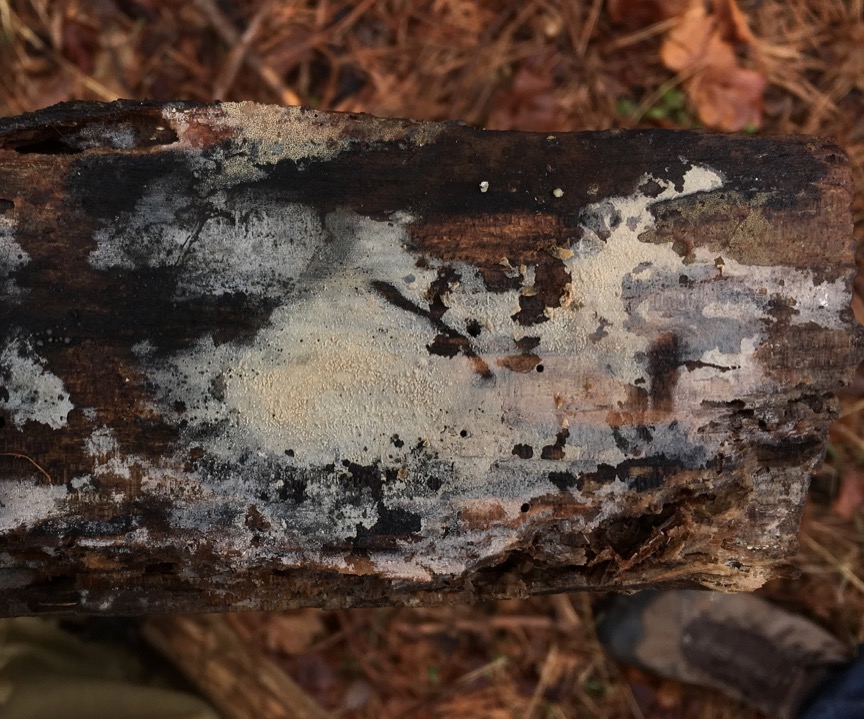
Sertulicium granuliferum collected at the Boston Harbor Islands National Recreation Area in March, 2017.
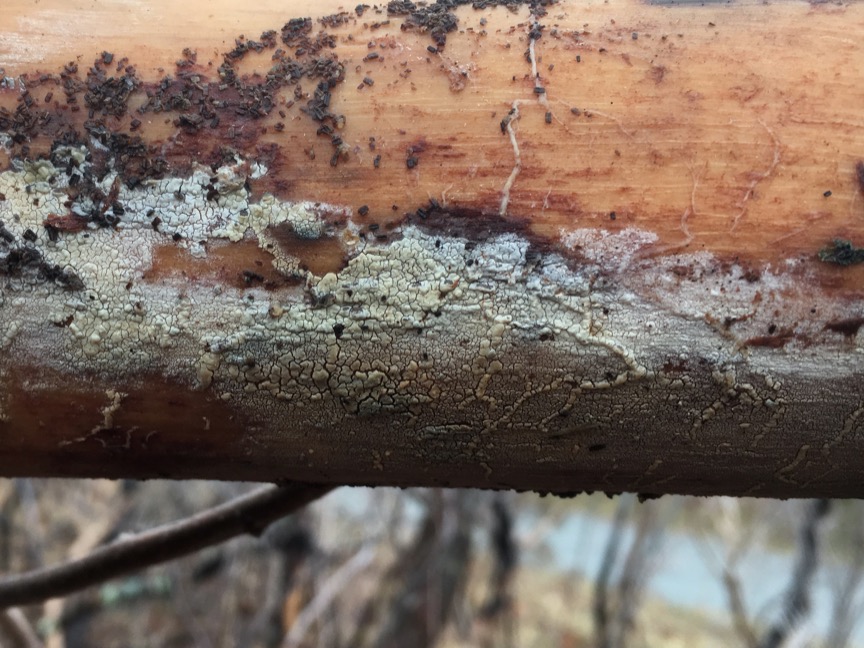
The hymenophore varies from papillate to smooth and cracked.
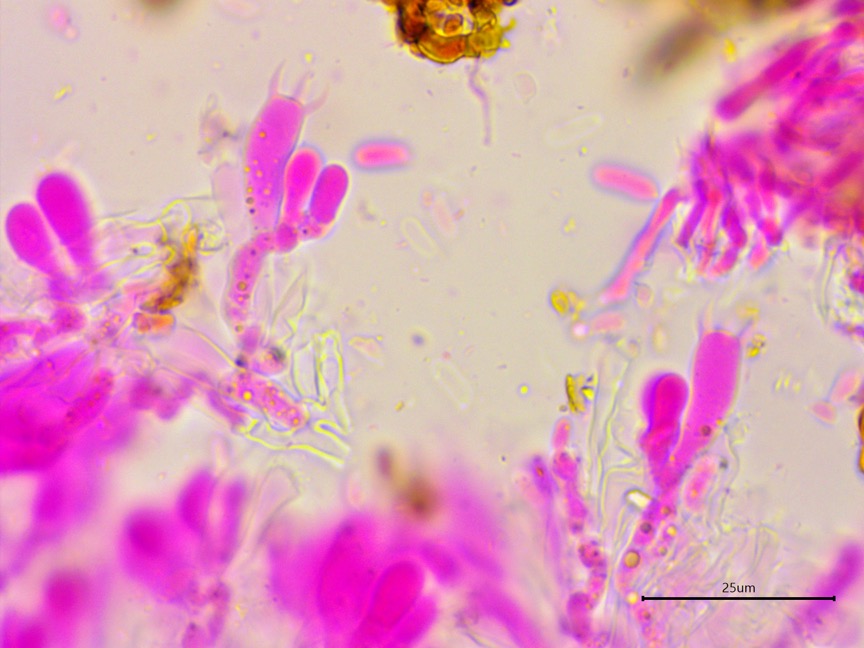
Basidia with 6 sterigmata and small oil droplets in the generative hyphae.
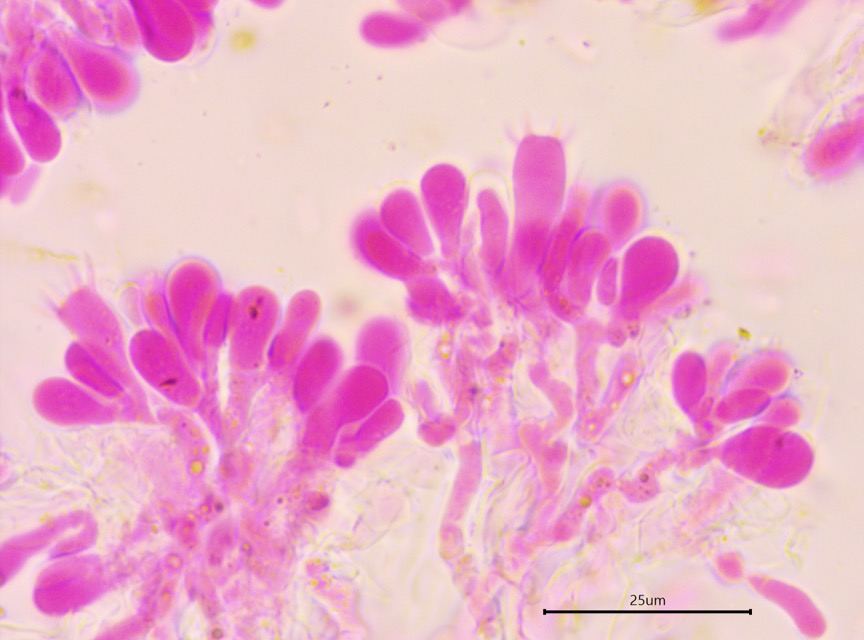
Another look at the basidia with 6 sterigmata.
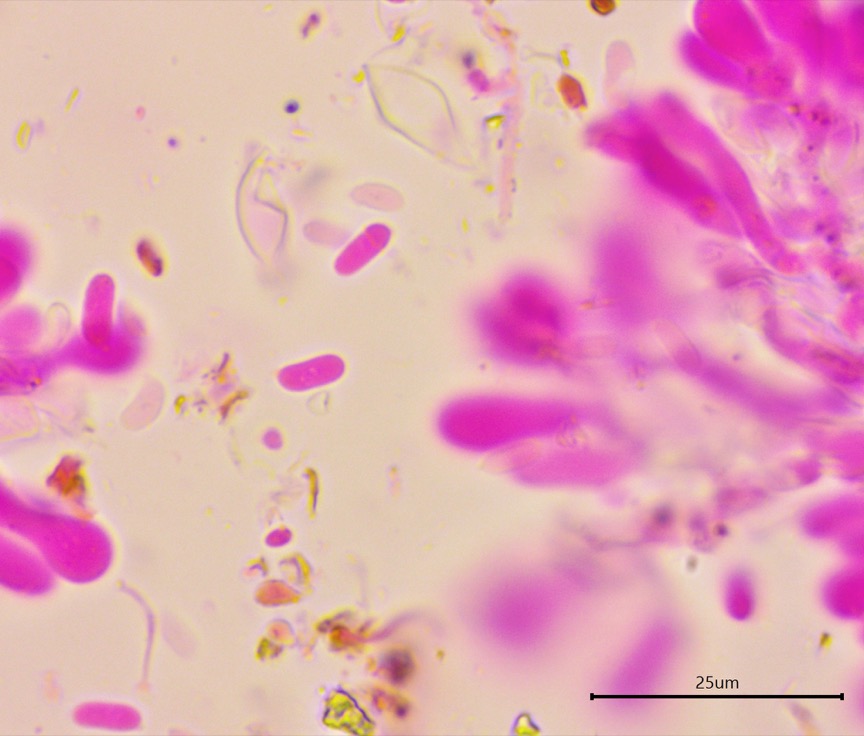
Narrowly cylindrical spores.
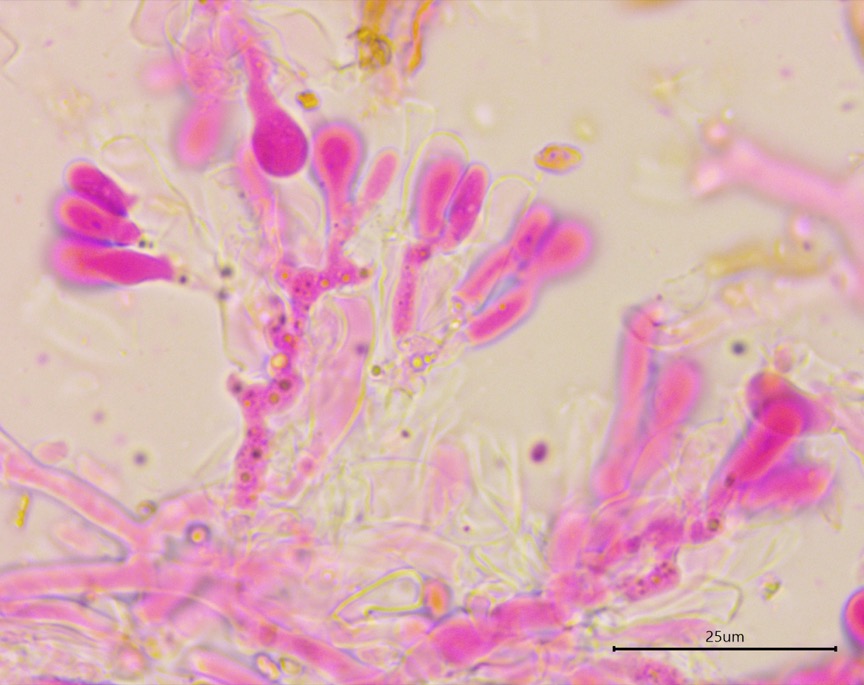
True to its name, this species has hyphae filled with guttules.
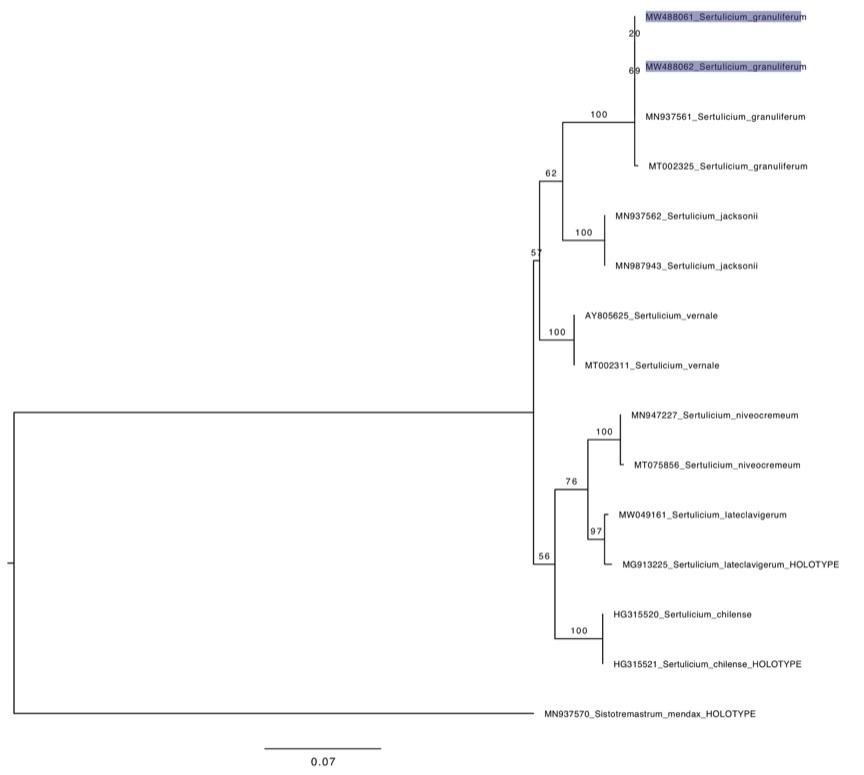
Phylogenetic tree of ITS rDNA sequences from the studied specimen (highlighted) and selected vouchered specimens on GenBank from Spirin et al. (2021). The sequences were processed with ITSx to remove the flanking SSU and LSU partial sequences, aligned in SeaView with MUSCLE, and made into a tree with RAxML using 100 bootsrap replicates and the GTR+GAMMA substitution model. Sistotremastrum mendax serves as the outgroup.
